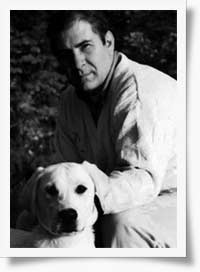 The heart of America has never been more visible than it was on September 11, 2001.
The heart of America has never been more visible than it was on September 11, 2001.
Tim Love, then Vice President of Saatchi and Saatchi, was in his office that morning and watched the planes attack. As the towers started to come down, he called me to say we had to do something.
We quickly decided we would make a pin out of the Heart of America Foundation’s (HOA) logo with the intent of selling it to benefit the relief effort. Tim said he would seek the support of the AdCouncil and designed a campaign to “Fight Hate with Love.”
Another friend, Robert Brooks, formerly with Procter & Gamble, opened a door at Hallmark. Hallmark agreed to sell the pins to support the effort. With the campaign in progress, my wife and I went to New York to assess the situation and see what we could do to help.
For those who weren’t there, there is no way to adequately describe the reality of Ground Zero at that time. The sheer enormity of the destruction was staggering. The damage done in human terms was even harder to comprehend.
The recovery site covered l6 acres. You could smell it for blocks before you could see it. Along the way, every storefront and fence seemed to have been converted into a billboard. Signs and banners, flags and letters of support for the rescue workers were everywhere.
A makeshift memorial had been created for the families of those who lost loved ones at the World Trade Center on the east side of the recovery site. For many at this time, this was the only place they had to go.
Hundreds of Teddy Bears were stacked along the wall of the public park that had come to be known as Winter Garden. Each Teddy bore the name of someone lost. Flowers and personal mementos had been placed on and around the stuffed animals. Photographs and poignant letters from loved ones were posted nearby.
As we walked the sacred ground, many tragic images were burned into our minds, but the image that will endure is the stuff that heroes are made of. It is the memory of men in uniform – rescue workers and medical technicians – methodically moving through the destruction sorting through mountains of debris.
It was as if the planes that struck New York, Washington and Pennsylvania opened a window to the soul of America. Heroes emerged from the shadows. They did what they were called to do – and what they were called to do was often nothing more than their jobs. It was the extraordinary ordinariness of their efforts that was most compelling.
They had no grand designs or elaborate plans. The scope of their effort was the length of their arms. Their long-term plan extended no further than carrying the nearest burden. Yet, in the process of simply doing what needed to be done, millions of pounds of concrete, metal, and glass, were moved, one piece at a time.
In the months that followed, seventy percent of all Americans made a contribution to the relief effort – a response unprecedented in world history. More than 60 percent of all Americans made a financial contribution to the relief effort. Many others volunteered time, gave blood, opened their homes, and contributed household items and necessary supplies.
When all was said and done, the isolated acts of a dozen men driven by hate were overwhelmed by thousands of acts of kindness and compassion. It is often said, “We are at our best when things are the worst.” That was certainly the case here. It was our finest hour.

